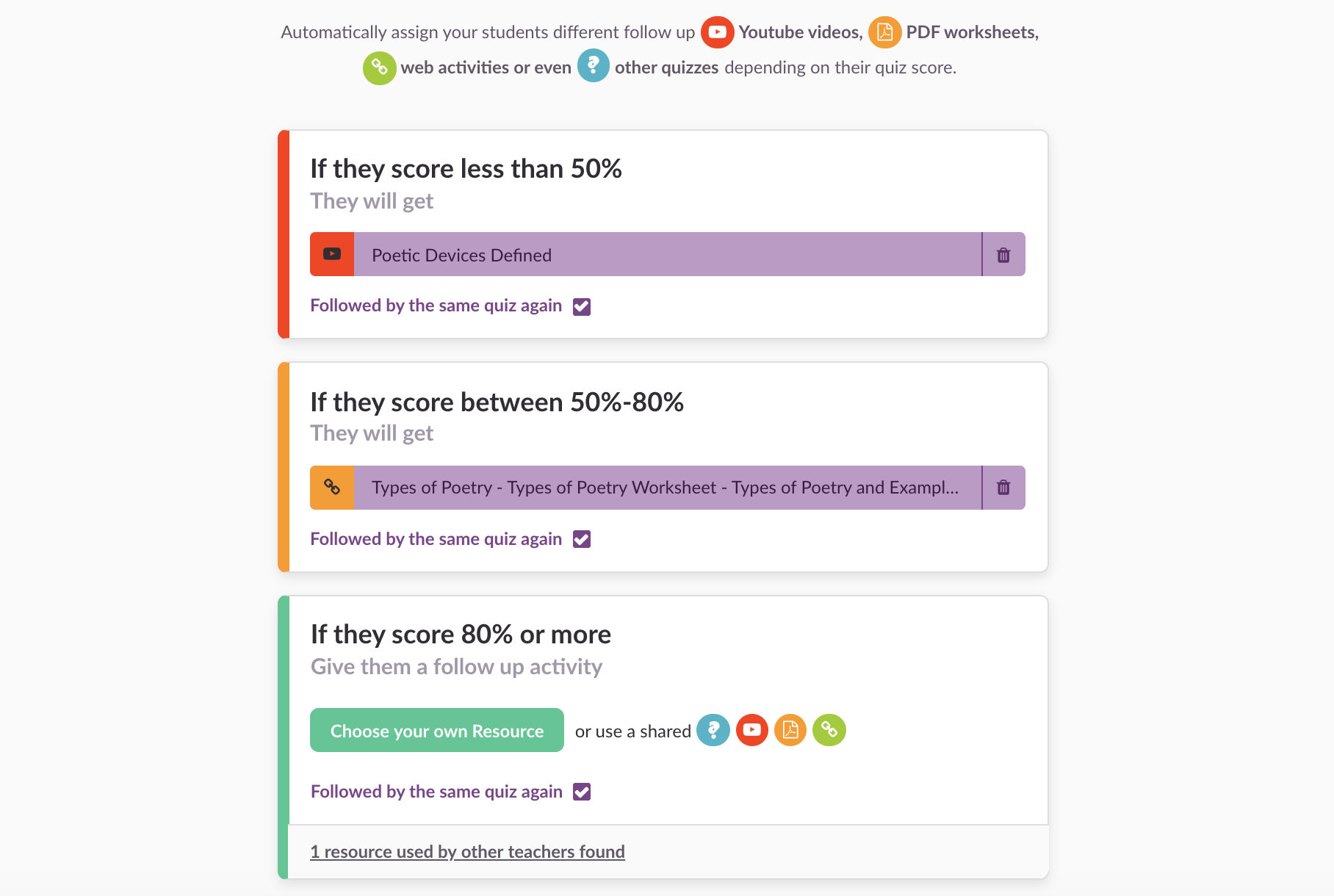By now you’ve heard of the benefits of differentiation, but might be stuck for ideas on how to carry this out with your students. Here are 5 easy strategies for differentiation to get you started.
P. S. We’ve added a distance learning tip for each strategy to ensure you can continue to differentiate even while distance learning!
1. Scaffolded worksheets

Creating worksheets with different levels of scaffolding for students of different abilities is a straightforward way of supporting weaker students, while challenging stronger ones. You can start from either end: by first creating worksheets for stronger students, and then adding more instructions and guidance in versions of the worksheets for students who are weaker, or start by creating a detailed, highly scaffolded worksheet for weaker students, and then removing hints and scaffolding for stronger students.
DISTANCE LEARNING TIP: Upload these files to Google Drive, and allow students to access the relevant file based on their level of readiness. Or better yet, look at strategy 2 below to automatically assign different worksheets based on student performance on a quiz!
2. Automate it with Quizalize
Quizalize has made it super easy for you to differentiate instruction by automatically assigning differentiated follow-up activities to students based on their score on a quiz.
Check out this video for how to differentiate with Quizalize:
DISTANCE LEARNING TIP: If your school is having to conduct online learning right now, click here for FREE Quizalize Premium!
3. We complement each other!
Peer tutoring is a useful way for stronger students to reinforce their learning, and for weaker students to learn from their peers, who might be able to explain concepts and ideas in a more relatable way. Pair up a weaker and a stronger student, and have them work through their corrections and mistakes on a previously graded assignment. This will give them the opportunity to talk through misconceptions and clarify ideas. Alternatively, they can work on a brand new assignment, or work on revision notes together.
DISTANCE LEARNING TIP: Make use of video conferencing tools such as Zoom or Google Hangouts to facilitate online peer tutoring.
4. Grouping students based on learning styles

Another way of grouping students for differentiation is according to their learning styles, instead of ability in a topic or subject. Often, the opportunity to explore a topic or concept in a new way may trigger connections that help clarify or reinforce them in a student’s head! You’ll be amazed at the ideas students can generate once they look at things from a different perspective.
DISTANCE LEARNING TIP: Not all students may be aware of their learning styles, or they may be a hybrid of two. Why not try a quiz on learning styles with your students as an introductory activity?
5. Assessment autonomy
This will work better for older students. Instead of having all students write an essay for their assignment, why not mix it up? For example, for an English assignment, your students could have a choice of 3 ways to present their ideas: a comic strip, a written story, or a podcast. A key to ensuring this succeeds is to ensure parity in the difficulty level and time needed for each of these options, so that students make their choices based on their personal strengths and interests. Giving students the autonomy to decide how they can best present their work will drive motivation and engagement.
DISTANCE LEARNING TIP: Check out our post on 10 tools for distance learning you might not have heard of for fresh ideas on activities to cater to different learning styles.

